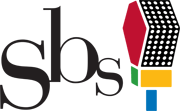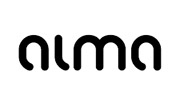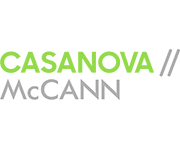Worldwide Mobile Phone Market Breaks 200 Million Unit Mark In 3Q05.
September 26, 2005
New product introductions, portfolio refreshes, and exciting new form factors helped spur growth in the worldwide mobile phone market during the third quarter of 2005. According to IDC’s Worldwide Quarterly Mobile Phone Tracker, worldwide mobile phone shipments rose 19.1% year over year and increased sequentially 8.8% in 3Q05 to reach 208.3 million units. Year-over-year growth increased substantially over the prior two quarters, signaling a balance against slower growth during the first half of the year. Each of the top 5 vendors within the industry reached all-time-high shipment levels and maintained the same rankings from the previous quarter.
“Last year, quarterly mobile phone shipments didn’t reach 200 million units until the end of the fourth quarter when vendors were keeping the channels’ shelves stocked for the holiday rush. As vendors announced new products earlier this year and accelerated their time to market, we’ve already reached this milestone,” said Ramon Llamas, research analyst for IDC’s Mobile Devices team.
The extensive introduction of new devices from a number of vendors in markets worldwide to fit the full spectrum of market segments fueled healthy growth in 3Q and ensured comprehensive early visibility and availability of devices for 4Q to meet the seasonal increase in demand and spending. As in previous quarters, Western Europe was a leading region with regard to new device launches.
“The dominance of the handset subsidy model and 12-month upgrade cycles in Western Europe combined with the introduction of a number of highly publicized, multimedia-oriented high-end handsets to drive demand in a mature market that is witnessing saturation of subscriber growth,” said Andrew Brown, program manager, European Mobile Devices, IDC.
However, despite sustained growth in the region fueled by the volume of new device releases quarter on quarter, IDC emphasizes the challenge facing vendors.
“As the mobile phone market becomes increasingly segmented in Western Europe, vendors are under pressure to expand their portfolios in order to comprehensively fulfill market demands with regard to air interface, form factor, technical specifications, multimedia capability, software, and ASP. Although new handsets will substantially assist market volume growth, the challenge for vendors is to meet differing segment requirements without over-extending the portfolio and adversely affecting margins,” said Geoff Blaber, research analyst for European Mobile Devices, IDC.
Vendor Highlights
Nokia. With shipments of 66.6 million units worldwide representing year-on-year growth of 29.6% and an increase in market share to 32%, the Finnish vendor reinforced its dominance of the mobile phone market, buoyed by particularly strong growth in China and Asia/Pacific and despite a year-on-year shipment decline in North America. Nokia’s Series 60 multimedia-oriented devices such as the 6630 and 6680 continued to enjoy solid demand, the 6680 becoming the world’s best-selling WCDMA device. However, despite growth of the high-end segment, ASPs declined slightly both sequentially and year on year due to strong volume growth in emerging markets.
Motorola. Touting itself as the company of “wickedly cool products,” Motorola finished the quarter as the clear number 2 vendor in the industry, claiming leadership in the Americas and gaining ground in Europe and developing markets. Like Nokia, much of Motorola’s shipments focused on growth within developing regions, thanks to its ultra-low-priced phones. Helping to propel the brand is the continued success of the RAZR series, and other impressive devices, most recently its iTunes ROKR phone and a series of other devices built on the RAZR platform.
Samsung. After a slow second quarter, Samsung picked up the pace with increased shipments to Europe, North America, and its home country of Korea. Samsung delivered on its promise to improve revenues and profits this quarter via the introduction of high-end and premium devices featuring EV-DO and W-CDMA, DMB, and Bluetooth. Recent announcements after the close of the quarter highlight Samsung’s commitment to even more high-end devices, as a device designed in conjunction with Bang & Olufsen is expected to hit the market in early 2006.
LG Electronics. Holding steady in the number 4 position is LG Electronics. The company improved its CDMA and GSM lineups with new phones, particularly in the U.S. and Korea, but also faced a decrease in WCDMA and other high-end phones, resulting in a slight decrease in average selling prices. Finally, whereas only 300,000 units separated LG Electronics from Sony Ericsson in 2Q05, the difference grew to 1.6 million units during the third quarter.
Sony Ericsson. Rounding out the top 5 vendors is Sony Ericsson. In addition to the introduction of several Walkman-branded phones, the company rolled out several mid-tier and entry-level phones to balance its portfolio. High-end devices still rule the company’s portfolio as the company’s average selling price rose from the previous quarter.
For more information at http://www.idc.com




























